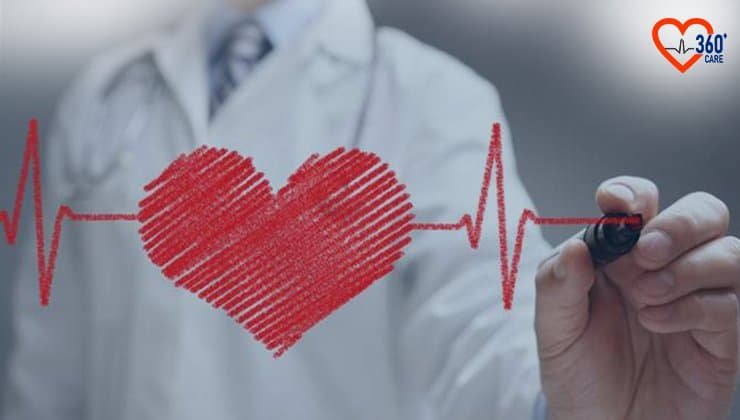What is an Angioplasty?
Angioplasty, commonly referred to as Percutaneous Transluminal Coronary Angioplasty (PTCA), is a procedure in which a small balloon is inflated inside the artery where the fatty blockage is, followed by placement of a stent in the artery to keep the artery open.
The balloon is inserted through a catheter passed through another artery, usually the femoral artery in the leg, which is then passed through the artery where the blockage is. This procedure allows blood flow to occur smoothly, thus preventing future heart attacks or restenosis (blockage occurring again).
Why Lifestyle Changes Are Crucial After Angioplasty
Cardiovascular or heart disease is a leading cause of death in many Western and developing countries. A large number of deaths can be reduced by modifying lifestyle after angioplasty. This can prevent heart attacks and restenosis (blockage occurring again).
Therefore, it is essential for patients to practice a healthy lifestyle after angioplasty and stent placement.
Lifestyle changes after angioplasty include changes in diet, nutrition and exercise, as well as habits.
Diet and Nutrition for a Healthy Heart
Diet and nutrition play a key role in maintaining our health, particularly our heart health. Therefore, changes in dietary lifestyle after angioplasty are necessary.
Here are a few Do’s and Don’ts to follow in your diet and nutrition.
| Do’s | Don’ts |
| Eating green leafy vegetables | Using a lot of salt in the diet |
| Consuming foods rich in protein, vitamins and minerals | Consuming sugar and sweet foods |
| Drinking an adequate amount of water | Consuming oily or fried food |
| Eating light, balanced meals | Eating big, heavy meals |
| Consuming fish oil capsules after consulting your doctor | Consuming alcohol or excessive carbonated/packaged drinks |
Exercise and Physical Activity After Angioplasty
A patient needs to rest in bed for 8 hours after angioplasty, which helps prevent hemorrhage from the femoral artery (the site where the catheter was inserted).
It is usually 1-3 days after the procedure that low-intensity exercise and self-care activities, such as bathing, toileting, dressing, etc, can be performed.
Once recovery progresses, an exercise program can be started.
Start with 10 minutes of exercise and progress it to 30 minutes as the tolerance and comfort improve. The exercise should always begin with a short warm-up, followed by light to moderate exercises and concluded by a cool-down phase of basic stretching. Consult your doctor for an appropriate exercise program.
While performing exercises, there are a few signs of cardiac distress to look out for
- Chest pain (angina)
- Shortness of breath or breathlessness
- Nausea or vomiting
- Cold clammy sweat
- Exhaustion
- Sudden drop in blood pressure or fainting
If you experience any of the above signs while exercising or during physical activity, it needs to be stopped immediately and the patient should rest. If the signs still persist, consult your doctor.
Patients also need to avoid carrying heavy objects or bicycle rides or hikes or extreme sport activities.
Managing Stress for Better Recovery
It is no surprise that stress and heart health are intimately linked. Life after angioplasty can be stressful and scary for the patient. Stress puts undue pressure on the heart and the circulatory system, which causes the heart to pump harder than it should and causes dysfunction in the circulation of blood.
Therefore, stress needs to be managed after an angioplasty to allow better and faster recovery.
There are multiple ways to manage stress such as
- Engaging in your favourite activities or hobbies
- Listening to calming music
- Practising yoga or meditation
- Doing activities that relax you and avoiding situations that stress you
- Practising mindfulness and gratitude
Regular Medical Check-ups
Problems in your heart can be detected and caught early with regular medical check-ups done by your doctor.
This can include simple and quick tests such as
- Blood tests to look for any abnormalities in glucose, cholesterol or fat (lipid) levels
- Blood pressure measurement to detect the presence of hypertension (high blood pressure)
- ECG (electrocardiography) to look for abnormalities in the electrical activity of the heart
- 2-D Echo scan to look for any abnormalities in the structure of the heart
- Treadmill test to look for any abnormalities in the functioning of the heart
Conclusion
Angioplasty is a safe, life saving procedure to combat the initial blockages in arteries. Its side effects are minimal. However it requires a few lifestyle changes that need to be followed after the angioplasty.
To know which lifestyle changes after angioplasty may be necessary for you, book a consultation with Dr Nikhil P.J.Theckumparampil, Heart Specialist & Cardiac-Surgeon, at Heart360 Care.
Frequently Asked Questions
Yes, you may resume your daily life activities after angioplasty with a few exceptions of heavy physical activities.
Foods high in carbohydrates and fats, particularly oily, fried or sweet foods, should be avoided as these can cause blockages in the arteries to occur again.
The recovery time after angioplasty is short, lasting 1-2 weeks since it does not involve major surgical procedures.
Yes, there are a few activities that should be restricted after angioplasty. These include heavy lifting, intense running or sports. Apart from these, some restrictions in lifestyle after angioplasty include avoidance of smoking, alcohol and drug consumption.
References
- Sadeghzadeh, V., Ghasemi, I., Raoufi Kelachayeh, S. S., & Naserian, J. (2013). Effects of a lifestyle-change program on cardiac risk factors after angioplasty. International Research Journal of Applied and Basic Sciences, 4(1), 234-238.
- Mohamed, H. A., Hafez, S. H., & Mohamed, S. S. (2017). Effect of instructional guidelines on lifestyle modification for patients after coronary angioplasty and stent. American Journal of Nursing Research, 5(6), 202-208.
- Sawant, S. A., & Waghe, A. (2017). Lifestyle modifications in post CABG versus angioplasty. International Journal of Applied Research, 3(12), 314-322.







